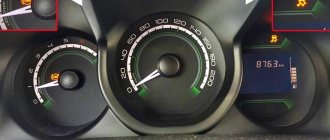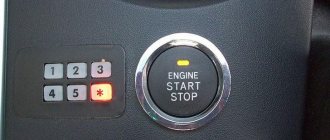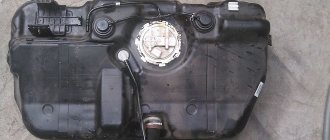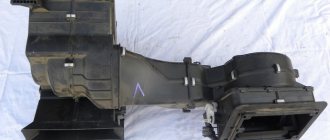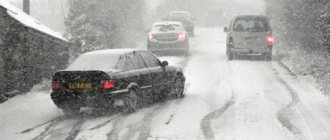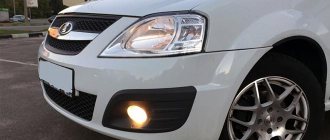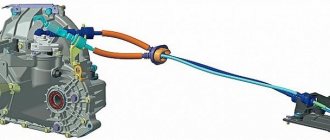The anti-lock braking system (ABS) is designed to maintain vehicle control and stability when the brakes are applied suddenly. In most cases, it is an invaluable assistant to the driver, preventing the risk of getting into an accident. However, the benefits of ABS appear on smooth surfaces, but in snowfall, on an icy road surface or uneven surfaces, it can be harmful, increasing the braking distance. Therefore, some drivers seek to disable ABS completely or temporarily.
Have you ever needed the help of a car lawyer?
Not really
Typically, the manufacturer does not provide for disabling ABS, although this function is present on some models, especially sports ones. Therefore, drivers have to resort to tricks and disconnect the power circuit to turn off the system.
System Features
ABS consists of two parts - electronic and mechanical. The “weak” link in it is the electronics. It is sensitive, so even the slightest negative influences lead to interruptions in operation.
In a car equipped with ABS, there is a warning mechanism that signals the cessation of operation. And he does this by means of a warning light on the dashboard.
When the ignition is turned on, this lamp lights up as self-diagnosis occurs. The system checks its performance, and if no violations are noticed, the lamp goes out, indicating that the ABS is in working condition.
But drivers are faced with the fact that the ABS warning light comes on while driving, and this can only happen under certain conditions. For some, the signal may not go out at all, for others the lamp lights up only when a certain speed is reached. The warning light that comes on confuses the owners, and the reason for this is simple - ABS works with the brakes and they perceive a malfunction of the system as problems with the braking system, which is wrong.
ABS is an addition to a car's braking system that increases its efficiency. Therefore, even if the ABS malfunctions, the car remains able to brake, but you need to get used to the operation of the brakes.
The anti-lock braking system is designed in such a way that if a malfunction is detected, it immediately turns off completely so as not to have any effect on the operation of the brakes.
Car enthusiasts solve an ABS problem by removing the fuse responsible for the operation of the system and postponing troubleshooting until a suitable occasion. But this will not work if the car is equipped with a number of security systems and some of them are based on ABS. In this case, it will not be possible to continue driving, since the electronics will block the operation of a number of components and systems due to a malfunction. It is better not to delay eliminating the cause of the anti-lock braking system malfunction.
Why did the ABC light come on?
Video: The ABS light is on on the instrument panel. The brake lights do not go off.
As already noted, breakdowns occur in the electronic component, which includes sensors installed on the wheel hubs and the control unit. The mechanical component does not cause problems.
The “culprits” for the ABS warning light coming on:
- fuse;
- wheel speed detection sensors;
- setting elements of sensors;
- wiring;
- Control block.
Why the ABS fails can be easily identified by checking the listed components if the car is equipped with an on-board computer with a display on which error codes are displayed. This will significantly narrow down your search, since you can find out from the code which sensor is acting up.
In a car without an on-board computer display, to determine the malfunction, you will have to look for a scanner and connect it to the diagnostic connector to determine what caused the failure.
Note that identifying the error code will make the search easier, since diagnostics will not provide accurate information; it will indicate where to look for the fault. Therefore, you can even do without scanning.
Looking for a reason
You should start troubleshooting with the fuse. If this element burns out, the ABS does not work. Note that you should not always go into the fuse box, since the behavior of the system itself can give a “hint” regarding the serviceability of the fuse. For example, if the ABS light on the instrument panel comes on only under certain conditions, but after turning off the power to the ignition switch and restarting the engine, the problem disappears, then the problem is clearly not in the fuse. It should only be checked if the warning light is constantly on.
The sensors are located in a place that cannot be called well protected. Therefore, dirt sticking to it will easily cause a malfunction, causing the system to shut down.
Sensors may simply break during the process of repairing and servicing the chassis. Careless work and the use of impact tools during disassembly often cause internal damage to the sensors. Since they cannot be repaired, the damaged element will have to be replaced to restore ABS functionality.
Is it possible to disable ABS without negative consequences?
It should be noted right away that if you disable the factory-installed system incorrectly, the on-board computer will record the fact of outside interference, which can lead to unnecessary questions during maintenance. If you have to contact the service under warranty, the fact that the ABS is turned off on its own may well become the reason for denial of warranty, and therefore free repairs.
To temporarily disable ABS, you can use the following algorithm of actions.
- Open the fuse box located next to the battery. In most cars, to disable the ABS, you will have to remove the 15-amp fuse, but before doing this, it is better to clarify this issue in the owner's manual for your specific car.
- After this, to check, you should briefly turn on the ignition - the brake and ABS lights should not go out, in addition, a sound signal will be heard. The ignition turns off.
- The mounting block itself is unscrewed and its bottom cover is removed.
- You will need to find the wire leading to the already removed fuse, cut it lengthwise and strip the ends by 1.5-2 cm.
- Before starting work, you need to purchase the simplest five-pin relay from a car store.
Before connecting, you should look at the contact diagram located on the case. You should start working with contacts 85 and 86, going to the winding. A wire leading to ground is connected to them, and the second will serve to supply a control signal from the ignition switch through the ABS switch off switch. Contact number 30 is connected to the wire coming from the fuse, and pin 88 is connected to the ABS. It is convenient to do this with wires prepared in advance, crimped on one side with the “mother” terminal. Subsequently, they will need to be installed in an empty relay block, and the switch off button is mounted anywhere in the cabin. How this is done in practice, and what the driver’s impressions are after this, can be seen in the video:
Why does the ABS light even come on?
In a normally running vehicle, this indicator shows you that the wheels have been unlocked. In this case, everything works fine, the sensors sensed the need to turn on the safety system, initiated its operation and demonstrated to the driver that some assistance was provided when braking. When you see the ABS light on while braking, it is better to release the brake pedal a little and take over control of the car. If you have an expensive, high-tech car, you can trust the well-thought-out systems and let ABS+EBD do the job. In other cases, the light may be on for the following reasons:
- the sensors are clogged, the on-board computer indicates that the diagnostic error code should be read;
- Dirt or rust got on the sensors, which caused the anti-lock braking system to turn on incorrectly;
- there is a problem in the on-board electrical system, which is demonstrated by random lights coming on;
- the wheel bearing has failed, which forces the sensors to constantly turn on the anti-lock braking system by mistake;
- the fuses in the unit responsible for the ABS system have failed and are passing the signal directly;
- There was an error in the computer that caused the ABS light to come on.
Also, sometimes troubles occur with the generator and other elements of the machine’s electrical circuit, which can result in the lighting of the diagnostic system light or warning lights of any type. For example, on a Volkswagen car produced in the 2000s, the anti-lock braking system light comes on even if there is an error in completely different components. Therefore, self-diagnosis is only a partially acceptable method of solving the problem, because often the driver does not have special tools at hand for a good investigation.
Learning ABS: Last Chance
Everything should be in moderation - the creators of the anti-lock brake system (ABS) know this well. The author studied its structure and operating principle.
The system we are interested in took root on cars back in the late 1970s, so it has stood the test of time. Currently, the absence of ABS as standard is very rare. It significantly improves road safety and partly reduces the requirements for driver skills. In any case, under the control of ABS, even an inexperienced person has a better chance of avoiding an emergency.
At the mercy of interest
The purpose of ABS is to maintain control during emergency braking. It is known that a locked wheel has lower grip on the road surface than a rolling wheel - the braking forces it creates are less, and there are no steering forces at all. At best, the car slides straight, at worst, along an uncontrolled trajectory with unpredictable results.
ABS controls the operation of the wheel on the border between the maximum possible (in specific conditions) grip and stalling, preventing it from developing. Of course, the coefficient of tire adhesion to the road itself does not depend on ABS. On ice it can be ten times lower than on dry asphalt, which means the car’s handling will be different. But in both cases, ABS provides the maximum possible.
With sufficiently precise tuning, it can act even more efficiently than an ace driver.
All diagrams, tables and graphs open in full size with a mouse click.
The operation of ABS is based on the wheel slip coefficient - the ratio of the difference between the vehicle speed and the peripheral speed of the wheel to the vehicle speed. In different driving modes, the forward speed of the vehicle and the peripheral speed of the wheel may not coincide.
During intense acceleration, the peripheral speed of the drive wheel is higher than the speed of the vehicle; during deceleration, the opposite is true. Naturally, 100% slip corresponds to two modes - wheel locking when braking or slipping in place.
Meanwhile, the best adhesion of the tire to the surface and, consequently, maximum transmission of braking forces is achieved when the degree of wheel slip is about 20%. So ABS maintains this value at 15–20%.
ANATOMY
The ABS module's hydraulic circuit includes solenoid valves and a pump. During normal braking, the valves are not activated; the required pressure is controlled by the driver's foot. But if slipping occurs with the risk of wheel locking, the ABS is activated.
Modern four-channel ABS: this arrangement makes it possible to control the pressure in the brake system separately for each wheel. All circuits of the system operate in a similar way in three modes - holding pressure, reducing it and increasing it. When the wheel is close to locking, the system goes into pressure holding mode. The valves cut off the wheel caliper from the main brake cylinder - now the fluid pressure on the pistons is constant, regardless of the force on the pedal.
What can you check yourself if the ABS light comes on?
The first thing you can do on your own in such a situation is to go to a car wash and ask for a good wash of the rims. Often, this intensive pressure washing can clean the ABS sensors located near the brake discs. On your way to the car wash, you can perform another simple test. Accelerate to a speed of 80-90 kilometers per hour, close the windows and turn off the music. If in this driving mode you hear a slight or annoying hum in the area of the wheels (front or rear), the likely cause of the light is a failure of the wheel bearing. There are several other things you can do:
- inspect the fuse box and replace the module that is responsible for the operation of the anti-lock braking system;
- if possible, read the diagnostic error code and read about it on the forums;
- to a specialist, describing your situation, and then try to correct the error yourself;
- get to the ABS sensors yourself by jacking up the car and removing the wheels to check their cleanliness;
- inspect the electronic control unit located under the hood, check that there is no liquid in it or on it;
- the best solution is to go to a service station and pay for diagnostics of the car's anti-lock braking and electrical systems.
Reasons for ABS system failure and what to do
Water getting into the contacts of the ABS control unit
We find the system control unit under the hood. It usually looks like a rectangular iron box with several metal tubes. There may be five or four of them. This is the anti-lock braking system unit. The power and control connector is connected to it - a large plug, it only fits the case, you won’t get it mixed up.
Disconnect the negative terminal of the battery and disconnect this connector from the ABS control unit. We check its contacts for moisture or mechanical damage. There were cases when they rotted and were destroyed by age and water, despite the moisture-proof casing of the connector. It may be damaged, allowing water to penetrate inside.
If you find moisture inside, blow and dry the plug and contacts both on it and on the control unit. If there is visible damage to the contacts of the plug, only replace it; if there is visible damage to the contacts of the ABS computer, then contact specialists who can replace the connector.
Fuse box
This is the simplest thing that a simple driver can check on his own if the ABS light comes on. It is advisable to check them first - this is the easiest way. We wipe our hands and climb under the hood, looking for a mounting block - a plastic box with fuses and relays.
Open it and turn over the top cover. It usually says where and what fuses are located in the block. We find the inscription “ABS” and according to the diagram we look for the fuse that is responsible for this system.
Checking the fuse. Usually there should be spare fuses in the mounting block if the machine is completely new. If there are none, then you can use the adjacent fuse. For example, remove a fan, horn, or other less important systems that were definitely working from the power socket. And insert in place of the old ABS fuse.
Mud and snow
Further verification becomes a little more complicated. The sensors are located on the wheel hubs. Snow or dirt may stick between them and the gear, also called the ABS ring. They stop reading the rotation speed, and the ABS error light comes on.
The anti-lock braking system (ABS) is designed to maintain vehicle control and stability when the brakes are applied suddenly. In most cases, it is an invaluable assistant to the driver, preventing the risk of getting into an accident. However, the benefits of ABS appear on smooth surfaces, but in snowfall, on an icy road surface or uneven surfaces, it can be harmful, increasing the braking distance. Therefore, some drivers seek to disable ABS completely or temporarily.
Typically, the manufacturer does not provide for disabling ABS, although on some models, especially sports ones, this function is present. Therefore, drivers have to resort to tricks and disconnect the power circuit to turn off the system.
ABS turns on randomly, the light blinks or lights up periodically
One of the most difficult forms of breakdowns is the constant blinking of the ABS light. This means that the anti-lock braking system sensors send incorrect signals to the computer, which, in turn, issues other incorrect commands to the vehicle's systems and modules. In such cases, many people prefer to simply turn off the anti-lock system, since unpleasant incidents may occur. For example, turning on ABS at a speed of 90 kilometers per hour with light braking can damage the chassis of the car and contribute to a complete loss of control over control. It's better to do this:
- bring the car to a service center for diagnostics, find out the reason for the chaotic operation of the equipment;
- for domestic cars equipped with a primitive anti-blocking device, it is better to immediately disable the system;
- complex designs and on-board electronic systems of foreign cars will have to be reflashed for repair;
- on some machines it will be easier to find the problem and fix it than to disable the anti-lock;
- you need to keep in mind that this particular system is not always the cause of the ABS light coming on; the problems can be different;
- During the diagnostic process, it is better to check the entire on-board electrical system and equipment.
By paying a certain amount for a car inspection, you can get the right answers to important questions. Sometimes a light that comes on on the panel can develop into a full-fledged repair of important units and components of the car, so you will have to spend a lot. But in most cases, this problem is not so expensive to solve. The cost of repair work depends, of course, on the make and model of the car, and on the price of spare parts. If an ABS sensor for a domestic car costs from 600 rubles, then a Japanese SUV will cost more than 10,000 rubles to replace one such sensor. We suggest watching a video about solving a similar problem using computer diagnostics:
Let's sum it up
Problems with ABS are not very pleasant incidents in any case. It is better to stay away from various problems and try to operate the car according to the requirements and advice of the manufacturer. But sometimes this turns out to be impossible, so it is necessary to have a good service in mind that can help in different situations. By contacting an official service center with this problem, you may become a victim of an overly scrupulous approach to diagnostics and incur huge repair costs.
However, sometimes the problem with the ABS sensor and the light on this system can be solved independently. Use the tips described above in the publication to understand all the features of a particular troubleshooting method. We warn you that it is impossible to completely disable ABS yourself. The on-board computer will either simply not allow the car to start, or will begin to behave inappropriately, producing new diagnostic system error codes each time. Have you encountered incorrect operation of ABS sensors and a constantly burning light?
The ABS system is an important element of the entire car design, without which safe movement is indispensable. According to statistics, the reason for a large number of road accidents is that drivers do not use the braking system correctly. In most cases, this problem occurs in winter, when the road surface is very slippery. Let's take a closer look at the components of the ABS system, and also give advice on what to do if the ABS light comes on.
What is ABS?
The main function of ABS is to control the braking force of each wheel. However, this happens in such a way that the wheels of the car do not lock when braking, but the car quickly stops. Thanks to the ABS system, the driver does not lose control of the car during sudden braking.
If the anti-lock braking system is missing or faulty, then when braking hard, the wheels stop rotating or the wheels lock. For this reason, the car may skid, especially when sudden braking occurs when turning.
In any case, if the ABS light comes on, the anti-lock system does not work. It is easy to check whether there is a problem with ABS: you need to accelerate the car to 40 km/h and sharply press the brake pedal to the floor. If the vibration of the pedal is not felt, the ABS is not working. The anti-lock braking system allows you to press the brakes sharply and quickly go around an obstacle. Without ABS, it will not be possible to sharply press the brakes and at the same time go around an obstacle, because the car may simply skid.
How to replace Grant rear brake pads without ABS
Let's look at the whole process step by step. To work you will need
:
- New pads (choose depending on whether the car has ABS or not);
- Keys 13: open-end and ratchet with long head;
- Wheel key;
- Head E-8;
- Head for 7;
- Screwdrivers for removing and installing springs;
- Pliers.
A long 13 socket will be needed if you are going to adjust the handbrake. It is not needed for simple pad replacement.
Delamination and severe wear of the rear pads = the handbrake does not work, noise and the car pulls to the sides when braking.
Preparing to replace pads
Getting ready to remove the brake pads. For this:
- We park the car on a flat surface
; - Remove the handbrake
and put it in neutral; - We support the wheels
with wheel chocks (you can use bricks, bars, etc.); - We pump out the brake fluid
to the MIN level - use a syringe or an enema bulb; - We remove the wheel bolts;
- We hang the rear wheel
(jack up the car) and remove it.
We support the wheels, remove the handbrake and wheel.
There are Ladas with disc brakes all around. They are often changed as needed, but sometimes re-grooving the brake discs also helps. If you don’t know what to choose, ask a diagnostician for advice.
How to remove a brake drum on a Lada Granta
The drum on the Grant is removed like on any other VAZ model. To do this , unscrew the key to 7
guide pins and remove the drum.
If the drum is soured and cannot be removed, the same pins can be screwed into adjacent holes as shown in the photo - they are made for mechanical removal of the drum.
Unscrew the pins and remove the drum.
It is not recommended to knock the drum with a mallet or hammer - there is a risk of damaging it.
Replacing pads yourself
Attention
– from this moment on, you cannot press the brake pedal. Otherwise, the brake pistons will extend and removal/installation will be difficult.
Step 1
: To weaken the springs, press the pads inward.
We press them out with a pry bar, focusing on the brake shield. Move the brake pads.
Step 2
(based on the figure below) – remove:
- upper spring No. 5;
- expansion bar No. 6;
- lower spring No. 13;
- guide springs No. 7 (available on both pads).
At this stage we need springs 5, 13, 7 and bar 6.
Step 3
: Freely remove the left block.
The handbrake lever is attached to the right one - so we pull out the block itself and use pliers to remove the cotter pin securing its finger to the block. We remove the handbrake lever from the cable, remove the cotter pin and disconnect the handbrake lever from the block.
Step 4
: Assembly with new pads is carried out in reverse order.
For ease of assembly: the retaining springs 7 can be put on using a thin wire or wire.
If new shoes make it difficult to put on the drum, they can also be tightened
inside using pry bars.
Why does the indicator on the instrument panel light up?
If the ABS light comes on on the dashboard, the reasons for this may be the following:
- It lights up every time the car engine starts - this is how the system signals that it is in working condition. If the system is fully operational, the light should go out after some time. If the ABS light does not light up when you start the engine, the indicator is most likely faulty.
- If the light does not go out for a long time, this means that there are problems in the ABS system. The on-board computer, detecting errors, generates a failure code, saves it and turns on the warning indicator.
Decoding fault codes Largus 8 and 16 valves
In the latest modifications, the instrument panels of the VAZ 21129 are practically no different. On the K4M engine, equipped with an 8-cylinder head, you can find the same errors as on the 16-valve modification of the internal combustion engine. This is due to the fact that the manufacturer uses a standard information encoding system adopted for the CIS and EU countries. Depending on the assembly and configuration of the vehicle, the diagnostic tool may display codes for additional faults associated with the installed units.
Errors Largus on methane
When driving on a gas mixture, the car’s on-board computer issues the usual codes that appear when running on gasoline.
C100F—error
The right front ABS sensor has failed. Check the sensor line and device for damage. The wiring contact group can play a role here. Oxidized parts may malfunction.
C101F— malfunctions
The general control of the front right speed sensor does not work correctly.
C10C3 - code
Critical fault of the ECU module. Check the system for damage.
ABS error C1046
A fault has been detected in the front left ABS sensor. The module may become dirty or the terminals of the wiring contact groups may be oxidized.
B2AAA—fault
Standard on-board network failure code. This means that one or more power wires have become frayed and are touching the car body.
DF124 - Largus breakdown
The engine valve clearances need to be adjusted. The car may jerk and run intermittently.
P0036 - breakdown
The oxygen sensor heater circuit after the converter is damaged. The device must be carefully diagnosed and replaced if necessary.
P0106: Largus - malfunction
The intake manifold absolute pressure sensor is reporting incorrect data. The device is not working correctly, check for dirt or damage.
P0130 - code
Error 0130 indicates a complete failure of the oxygen sensor before the converter. The problem is resolved by replacing the part.
Largus: error P0132
The same sensor – the signal is too high during operation.
P0140 - error
DK2 (oxygen sensor) loss of connection or open circuit. The line needs to be checked and, if necessary, restored.
Largus: fault P0141
Heater DK2 failed. The device needs to be replaced.
Breakdown P0133
DK1 response to changes in the load on the power plant is too slow. The sensor may malfunction due to clogging.
Malfunction P0135
DK1 heater circuit is faulty. Correcting the situation is similar to other problems.
Code P0136
DK2 signal loss. The wiring may be critically damaged or the sensor itself may have failed.
Error P0170
Problems with the fuel supply system. You need to adjust the throttle and fuel rail.
Malfunction P0171
Excessively lean fuel mixture. Check the lines for parasitic air suction and module settings.
P0300 - error
There are multiple misfires in the engine. Check the entire system and find the breakdown. The cause is faulty spark plugs.
Error P0301
A more specific representation of the problem. Misfires were noticed in the first cylinder.
P0304 - error
Likewise for the last cylinder in the row.
Error 032700
Low signal level of the knock sensor. It is necessary to diagnose and clean the part.
P0363 - Largus error
On Lada cars, the error indicates multiple misfires aimed at protecting the catalytic converter.
P0420 - error
Catalyst efficiency is below the specified limit. This indicates that the mesh is clogged or covered with carbon deposits.
Malfunction P0422
A similar problem, with the difference that the device is completely inoperable.
Breakdown 050039
Damage to the vehicle speed sensor. The system requires diagnostics.
Largus P0830 - malfunction
Broken clutch pedal switch. You need to get under the dashboard and replace the pressure sensor.
Code 1301
Code P1301 indicates misfire of the mixture to protect the converter in cylinder 1 of the power plant.
P1302 - error
Likewise for engine chamber 2.
P1303 - code
Identical problem in cylinder 3.
P1304 - code
Same as P 1301.
167013 - code
The code appears as a result of improper operation of the engine or gearbox. On Largus, this indicates a problem in the ignition system and ignition of the mixture.
P1602 error
A breakdown shows the driver that the problem is the lack of voltage on the on-board network. This is where the battery usually fails or its terminal terminals oxidize.
P2108 - malfunction
The encoding tells the driver about a breakdown of the throttle drive control system. The error is purely software and can be fixed by firmware changes.
Error P2119
The actual position of the remote control differs from the established one. The mechanical drive needs to be cleaned and its calibrations checked.
Code - 81402
The code is a designation of the Luxury car's firmware and does not indicate any breakdowns.
Engine errors on Largus
Due to the use of many sensors and gauges on a car, it will be problematic to list engine malfunctions in one heading. All of them are connected to the Check indicator on the dashboard.
Knock Sensor Errors
Largus: catalyst error
ABS error
The system indicates a power failure in one of the wheel sensors. Sensors operate in difficult conditions and are often exposed to road chemicals, dirt and dust, which negatively affects their durability.
Parking sensor errors
Causes of ABS error
Why does the ABS light come on when the car is moving? This means that the entire system or its individual parts are not working correctly. A breakdown of the anti-lock braking system can occur for the following reasons:
- the contact in the connection connector has disappeared;
- loss of communication with any sensor, most often due to a broken wire;
- ABS sensor failure;
- the crown on the hub is damaged;
- The ABS control unit does not work.
Why might you need to disconnect?
Most drivers turn off ABS in conditions where it could do more harm than good: on snowy or sandy surfaces, on icy roads, or when the road surface is covered with holes and potholes. In such conditions, ABS operation increases the braking distance, which can lead to dangerous situations.
Also, disabling ABS may be necessary when its sensors or control unit are not working correctly, which leads to incorrect operation of ABS and threatens emergency situations.
Another reason for disabling the anti-lock braking system is the driver’s desire to use a sporty driving style with controlled drifts and wheel locking.
ABS does not allow you to practice controlled skidding of the car, so you have to turn off the system.
Features of breakdowns
Also, the reason why the ABS light is on may lie in severe contamination of the working surface of the sensor, which is located on the wheel. In this situation, it is enough to wash the car so that the ABS indicator goes out.
It is worth remembering how long ago the “iron horse” underwent a technical inspection at a service station and how exactly the check was done, because many inexperienced technicians perform wheel diagnostics by removing the wires from the sensors. After this, would-be specialists forget to connect the previously removed wires, so the ABS indicator on the panel continues to light.
If there are problems with the control unit, it will be difficult to fix them. You can detect it using the on-board computer, which will show the system error code. Based on the information received, a problem with anti-locking is calculated. It will not be possible to replace the ABS sensor on your own, so it is important to contact a specialist car service.
What are the risks of a breakdown of the ABS system?
If the reason lies in the burnt-out light bulb of the indicator itself, then there will be no problems. You should simply replace it at a service station or even yourself.
If the ABS light comes on while driving, it is important not to panic or suddenly stop the car - in most cases it is safe to move on. But you need to remember in this situation that you shouldn’t count on the uninterrupted operation of the anti-lock braking system, as well as automatic traction control, and rely on the adequate functioning of the stability control system. Therefore, it is necessary to listen to how the car behaves when driving and whether the braking system is working properly. Only after assessing the condition of the car can you make a decision: go to a car service yourself or call a tow truck.
FAQ
You can often hear the question “ How to disable ABS without removing the fuse, if such a function is not provided by the manufacturer?” " The only way to disable the system on the vast majority of cars is to disconnect the system's power supply circuit, which requires removing the fuse. There are no other shutdown options if there is no shutdown button in the cabin.
Another common question: “ Should ABS be turned off for the entire winter season? " If the reason for de-energizing the system is only the desire to shorten the braking distance on a winter road, then this is not necessary. For reducing the braking distance you will have to “pay” with loss of controllability, which is much more dangerous.
What you can do with your own hands
Let's look in detail at what you can do yourself if you detect a problem with the ABS system:
- Open the hood and disconnect the battery. To find the electronic control unit, you need to look under the hood. This mechanism is located in the same housing with a hydraulic modulator - a brake force distributor. How to recognize the electrical unit? A large number of brake pipes (most often 6) and wires with a connector are connected to the system. For a visual inspection, the connector is disconnected and inspected for the presence of water or mechanical damage to the contacts. If moisture is detected, it is blown or dried.
- It is important to check the fuses, which should be done first. Several fuses can be connected to the ABS system, which are located mainly in the engine compartment mounting block.
- Independently identifying problems in the functioning of the ABS is not always an easy task. Automotive specialists also advise inspecting the car lift. In this situation, it is allowed to lift the car with a jack. The main task is to inspect the wires for damage. The wheel sensor wires are often screwed into the hub. This check will reveal whether the wires have rubbed against the wheel and come off the mounts.
- It is also important to check the wheel sensor wires, which can be up to one meter long. Moisture and rust must be eliminated.
- If everything is in order with the main components of the car, but the ABS light is still on, then the “iron horse” should be immediately tested at a service station, where specialists will try to “reset” the error in the locking system by simply removing the battery terminal.
- If none of the proposed methods for putting the display in order helped, you should immediately go to a car service center to identify and fix the problem using computer diagnostics.
The principle of operation of the ABS system is quite simple and understandable in terms of self-diagnosis. And today, not many reasons have been identified due to which it may fail. With the right approach, most car enthusiasts will be able to independently detect and repair the breakdown. Otherwise, you just need to contact the specialists at the service station.
